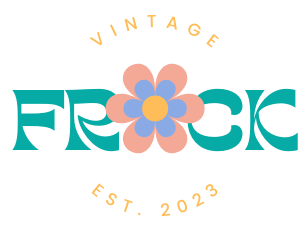Vintage definition
The Oxford English Dictionary defines the word vintage as an adjective “denoting something from the past of high quality, especially something representing the best of its kind”.
However, there is no dictionary definition of what makes clothing vintage, and it’s something that many disagree on.
There is a good(ish) argument for why the 1990s might not be vintage, but some will even turn their noses up at mass-produced goods from the 1970s onwards due to quality issues. But each to their own, I say.
There is some consensus that any item of clothing made pre-1930s is classed as antique, because it is very rare for clothing of this age to have survived in a good condition.
Wikipedia says vintage clothing is “a generic term for new or second hand garments originating from a previous era”. But that’s fairly broad.
Other online sources say its anything older than 20 years – which is fine for now, but I can’t imagine calling 20-year-old Primark dresses vintage (or who knows, maybe I will!)
The ‘Frock Vintage’ definition
We define vintage as anything from the 1930s to the early 1990s.
We mainly stock clothing from the 1960s,1970s, 1980s and early 1990s. We stock a small number of things from the year 2000 (and can vouch for them because I bought them back then!)
I’ll admit I find it quite strange to call clothes from the 1990s vintage, especially as it’s the era that I grew up in (I remember people the generation before me telling me “the 80s isn’t vintage” when I started collecting as a teenager in the 2000s).
However, I do think it is a period with a very particular aesthetic, and one in which many well-known British brands were still manufacturing in the UK, so I like to preserve these pieces as something high quality and pre ‘fast fashion’.
We try, where possible, to date clothing as accurately as possible based on researching labels, styles, fabric and construction methods used. Where we are unsure, we will say a piece is “in the style of” a certain period as we don’t want to mislead.
